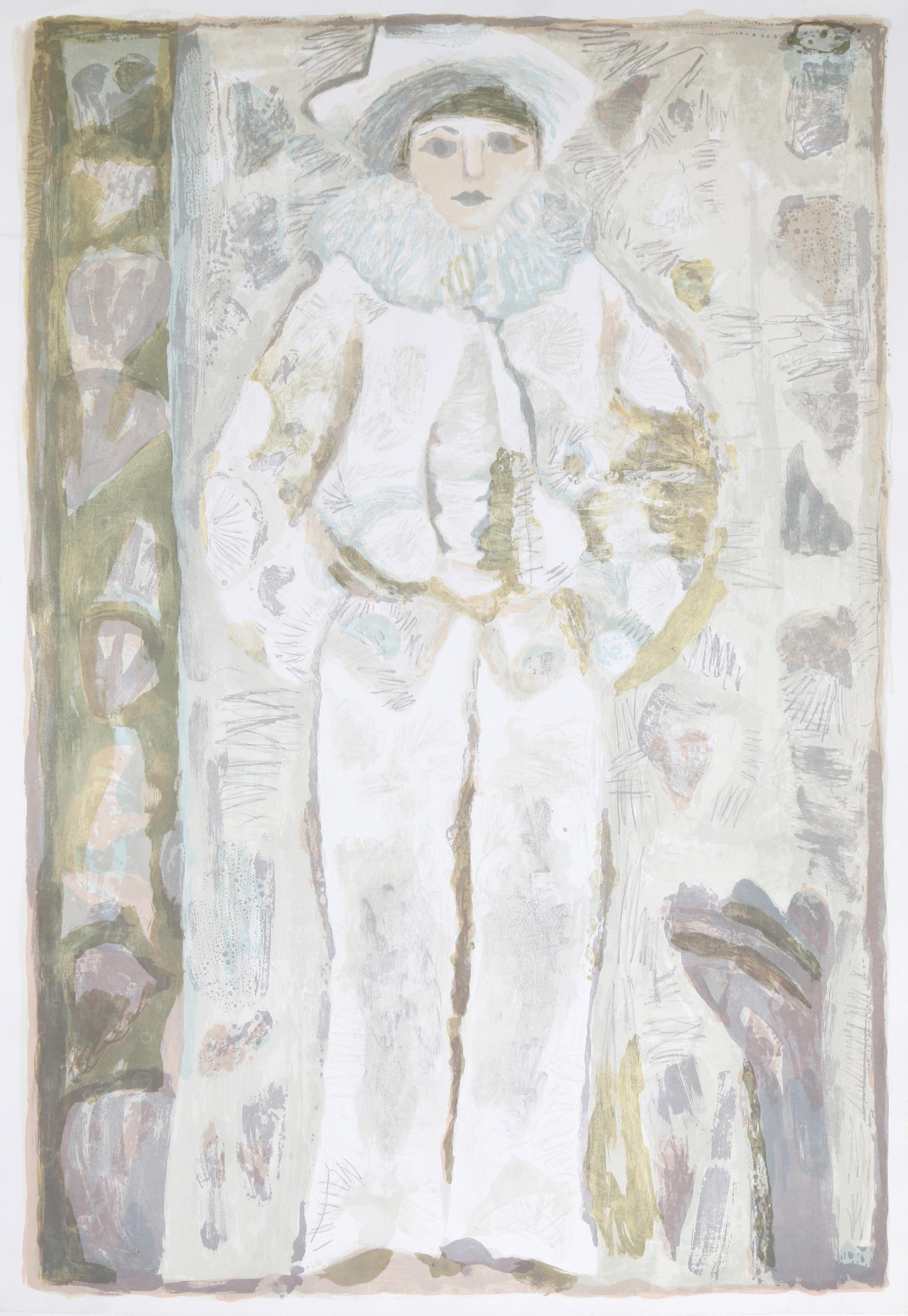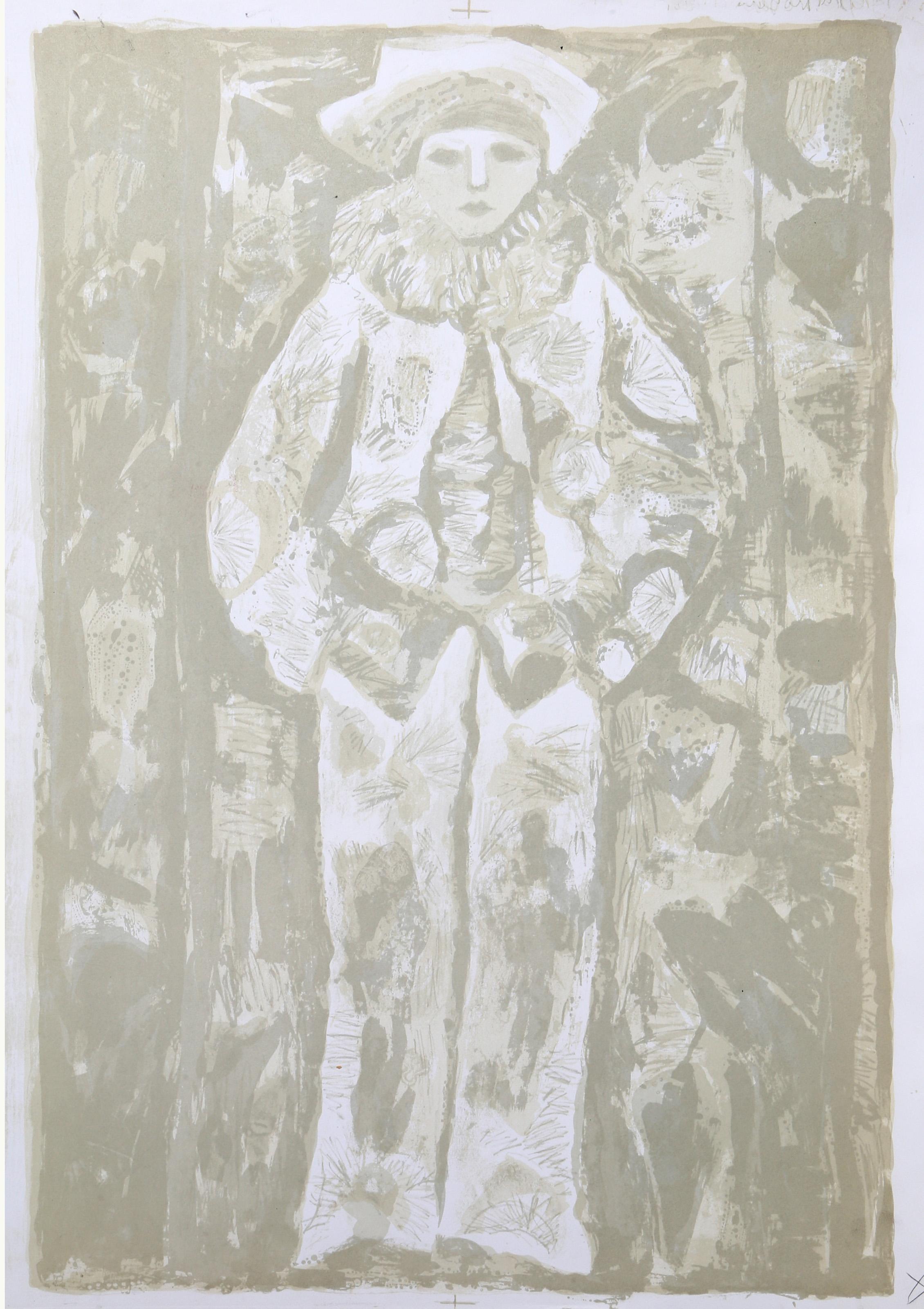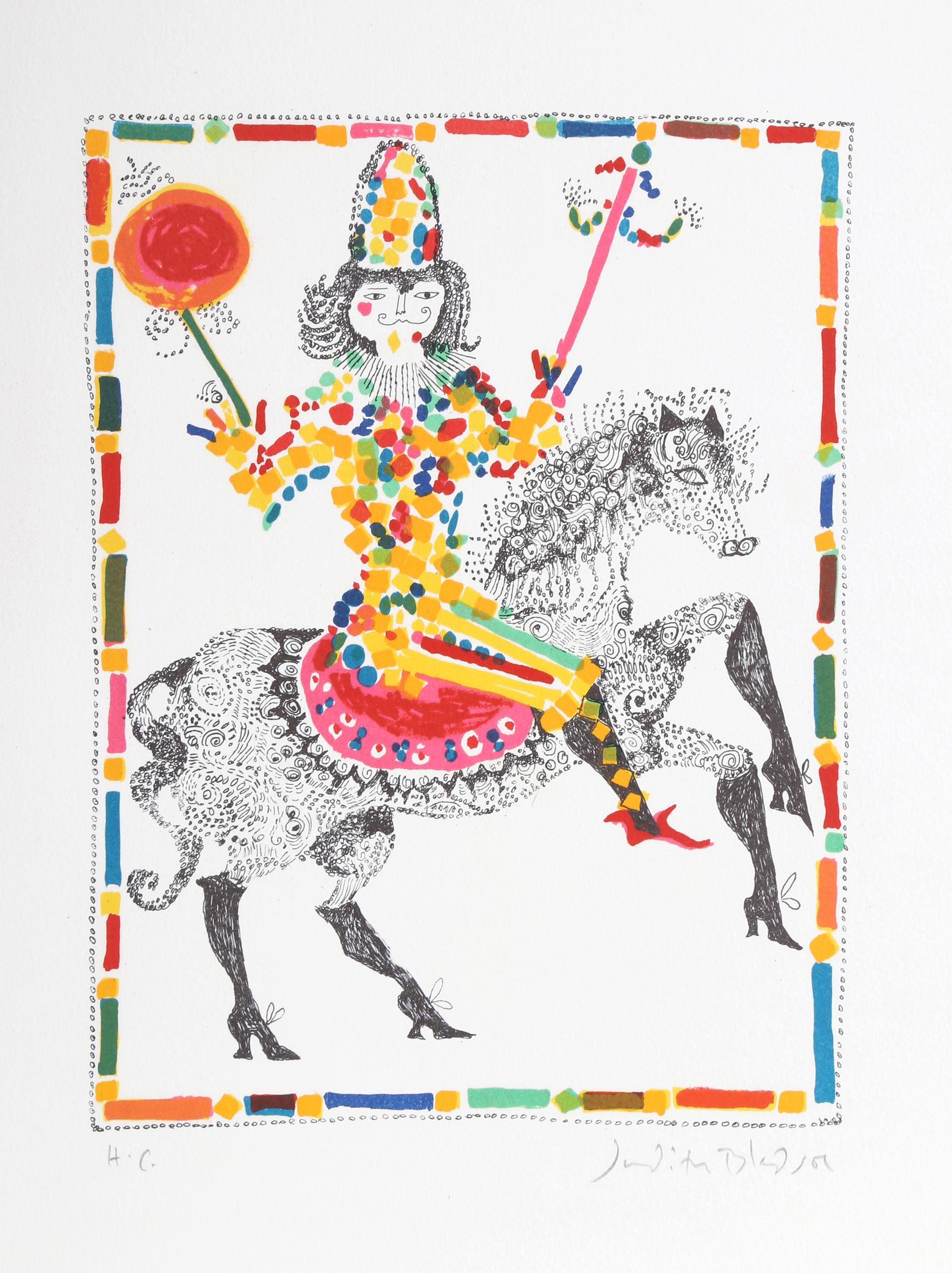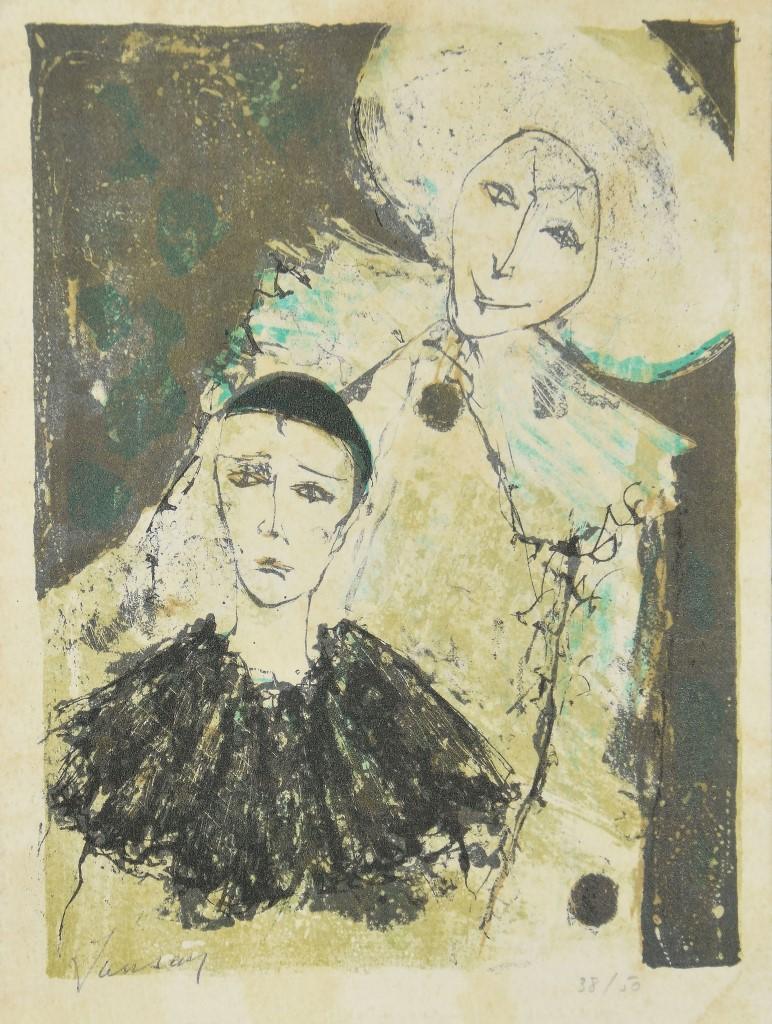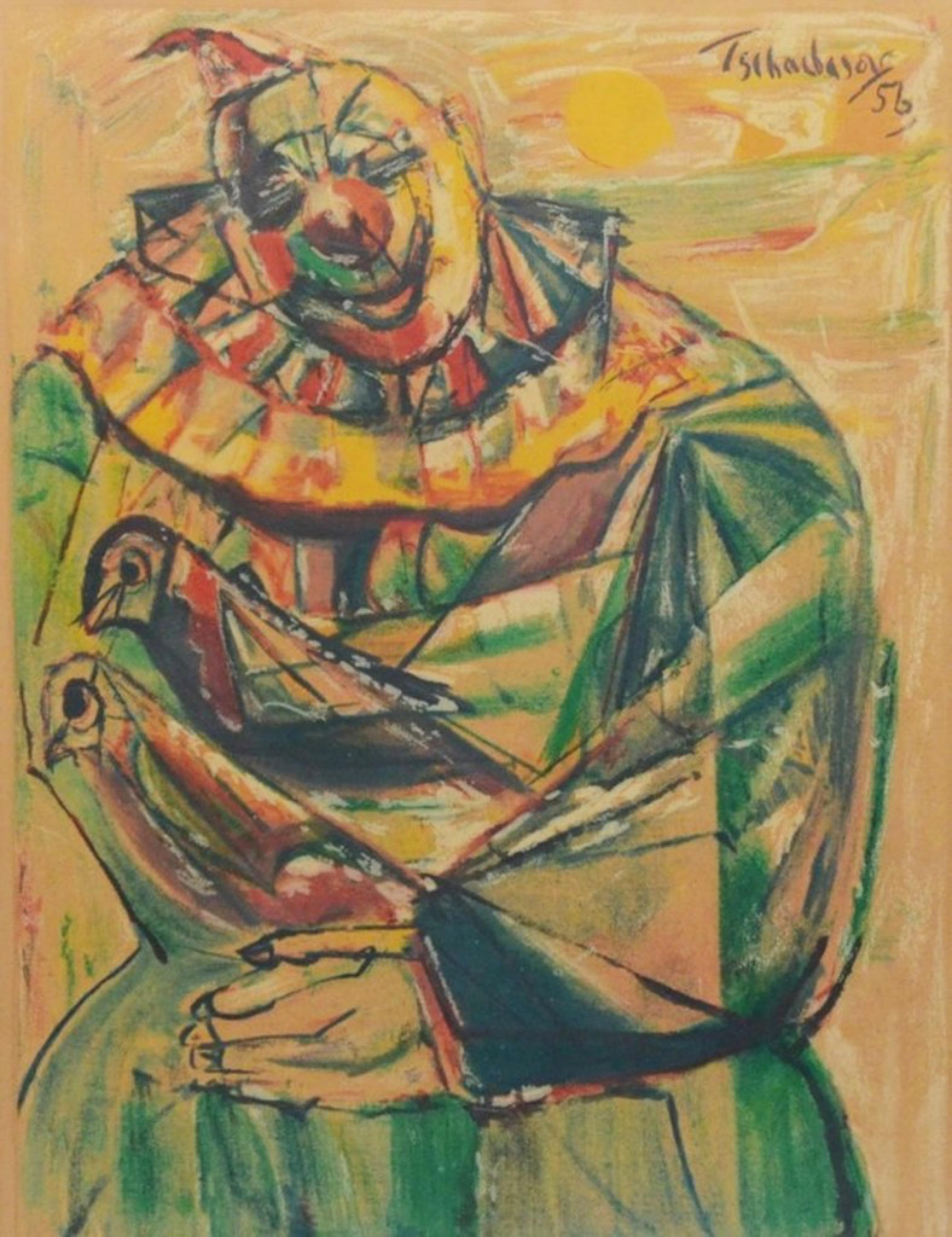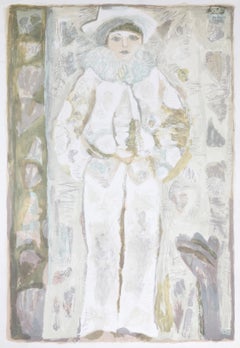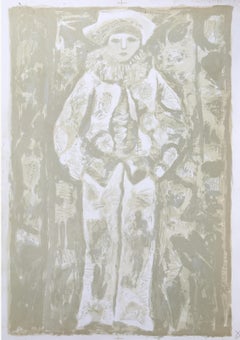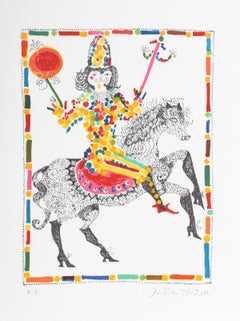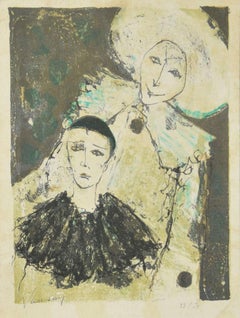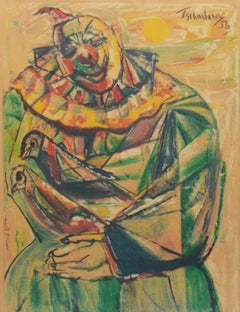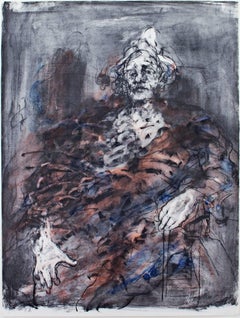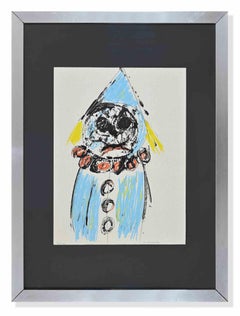Items Similar to Clown I, Signed Folk Art Lithograph by Judith Bledsoe
Want more images or videos?
Request additional images or videos from the seller
1 of 5
Judith BledsoeClown I, Signed Folk Art Lithograph by Judith Bledsoecirca 1975
circa 1975
$750
£581.69
€659.32
CA$1,073.38
A$1,172.89
CHF 608.06
MX$14,011.81
NOK 7,737.99
SEK 7,244.59
DKK 4,923.31
About the Item
Judith Bledsoe, American (1938 - 2013) - Clown I. Year: circa 1975, Medium: Lithograph, signed and dedicated in pencil, Size: 35 x 24 in. (88.9 x 60.96 cm), Description: Standing with his hands tucked into his pockets, the clown wearing a white costume with red hair stands against a background of greyish-green shapes in this Judith Bledsoe print.
- Creator:Judith Bledsoe (1928, French)
- Creation Year:circa 1975
- Dimensions:Height: 35 in (88.9 cm)Width: 24 in (60.96 cm)
- Medium:
- Movement & Style:
- Period:
- Framing:Framing Options Available
- Condition:
- Gallery Location:Long Island City, NY
- Reference Number:Seller: RO690461stDibs: LU46614405992
About the Seller
4.9
Platinum Seller
Premium sellers with a 4.7+ rating and 24-hour response times
Established in 1979
1stDibs seller since 2014
3,166 sales on 1stDibs
Typical response time: 1 hour
- ShippingRetrieving quote...Shipping from: Long Island City, NY
- Return Policy
More From This Seller
View AllClown III, Folk Art Screenprint by Judith Bledsoe
By Judith Bledsoe
Located in Long Island City, NY
Judith Bledsoe, American (1938 - 2013) - Clown III. Medium: Screenprint, Edition: AP, Size: 36 x 26 in. (91.44 x 66.04 cm), Description: Standing with his hands tucked into his pock...
Category
1970s Folk Art Prints and Multiples
Materials
Screen
Clown II, Folk Art Screenprint by Judith Bledsoe
By Judith Bledsoe
Located in Long Island City, NY
Judith Bledsoe, American (1938 - 2013) - Clown II. Medium: Screenprint, Edition: AP, Size: 36 x 26 in. (91.44 x 66.04 cm), Description: Standing with his hands tucked into his pocke...
Category
1970s Folk Art Prints and Multiples
Materials
Screen
Clown on Horse from A Little Circus, Lithograph by Judith Bledsoe
By Judith Bledsoe
Located in Long Island City, NY
Judith Bledsoe, American (1938 - 2013) - Clown on Horse from A Little Circus. Year: 1974, Medium: Lithograph, signed in pencil, Edition: HC, Size: 15 ...
Category
1970s Folk Art Prints and Multiples
Materials
Lithograph
Clown with Trumpet from A Little Circus, Lithograph by Judith Bledsoe
By Judith Bledsoe
Located in Long Island City, NY
Judith Bledsoe, American (1938 - 2013) - Clown with Trumpet from A Little Circus. Year: 1974, Medium: Lithograph, signed in pencil, Edition: HC, Size: 15 x 10.5 in. (38.1 x 26.67 ...
Category
1970s Prints and Multiples
Materials
Lithograph
Clown, Modern Lithograph by V. Beffa
Located in Long Island City, NY
V. Beffa - Clown. Year: circa 1979, Medium: Lithograph, signed and numbered in pencil, Edition: 250, Size: 30 in. x 22 in. (76.2 cm x 55.88 cm)
Category
1970s Modern Portrait Prints
Materials
Lithograph
Clown, Surrealist Etching by James Kearns
By James Kearns
Located in Long Island City, NY
James Kearns, American (1924 - ) - Clown, Year: circa 1975, Medium: Etching on Rives, signed, titled and numbered, Edition: 44/50, Image Size: 14.5 x 8.75 inches, Size: 22 x 15 in....
Category
1970s Surrealist Portrait Prints
Materials
Etching
You May Also Like
Clown - Original Lithograph on Paper by Jean Jansem - 1970
By Jean Jansem
Located in Roma, IT
Clown is an original artwork realized by Jean Jansem.
Original lithograph on ivory-colored cardboard.
Hand-signed on the lower left. This artwork is an beautiful exemplares of 50 s...
Category
1970s Figurative Prints
Materials
Lithograph
Mid Century Modern Clown print, hand signed 144/250 Russian born American artist
By Nahum Tschacbasov
Located in New York, NY
Nahum Tschacbasov
Mid Century Modern Clown, 1956
Lithograph
Signed, dated and numbered 144/250 in graphite on the front
34 x 27.5 inches
Unframed, affixed to matting
Published by American Color Slide Co, Ltd., New York
Terrific uncommon vintage signed, numbered and dated mid Century modern lithograph from this interesting and distinctive -and undervalued Russian American artist. Highly collectible clown...
Category
Mid-20th Century Expressionist Abstract Prints
Materials
Lithograph
"Le Clown, Artist's Proof, " Original Color Lithograph signed by Claude Weisbuch
By Claude Weisbuch
Located in Milwaukee, WI
"Le Clown" is an original lithograph by Claude Weisbuch. The artist signed the piece lower right and wrote the edition number (E.A.) in the lower left. This piece is a portrait of a ...
Category
1960s Modern Figurative Prints
Materials
Lithograph
My Clown - Screen Print by Giovanni Veruda - Late 20th century
Located in Roma, IT
Clown is a contemporary artwork realized by Giovanni Veruda.
Mixed colored screen print.
Hand signed and numbered on the lower margin.
Edition of 96/100.
Includes frame: 77 x 3 x...
Category
Late 20th Century Modern Figurative Prints
Materials
Screen
'Clown' — WPA American Expressionism
By Leon Bibel
Located in Myrtle Beach, SC
Leon Bibel, 'Clown', color serigraph, 1939, edition 20. Signed, dated, titled, and numbered '/20' in pencil. A fine, richly-inked, painterly impression, with fresh colors, on buff la...
Category
1930s American Modern Figurative Prints
Materials
Screen
Clown - Silkscreen by Anna Veruda - Late 20th Century
Located in Roma, IT
Clown is an original contemporary artwork realized in the late 20th century by Anna Veruda.
Mixed colored silkscreen.
Hand signed on the lower right margin.
Numbered on the lower ...
Category
Late 20th Century Contemporary Figurative Prints
Materials
Screen
More Ways To Browse
Folk Art Clown
Clown Costume
Bucking Horse
Carlo Pellegrini
Chagall Jacob
Chagall Jerusalem Windows
Charles White Artist
Chartres Cathedral
Christmas Lithograph
Cote D Azur Vintage Posters
Cote D Azur Vintage Travel Poster
Craig Martin
Curtis Engraving
Dali 1977
Jim Dine Poster
La Revue Blanche
Matador And Bull
Maurice Utrillo Montmartre
